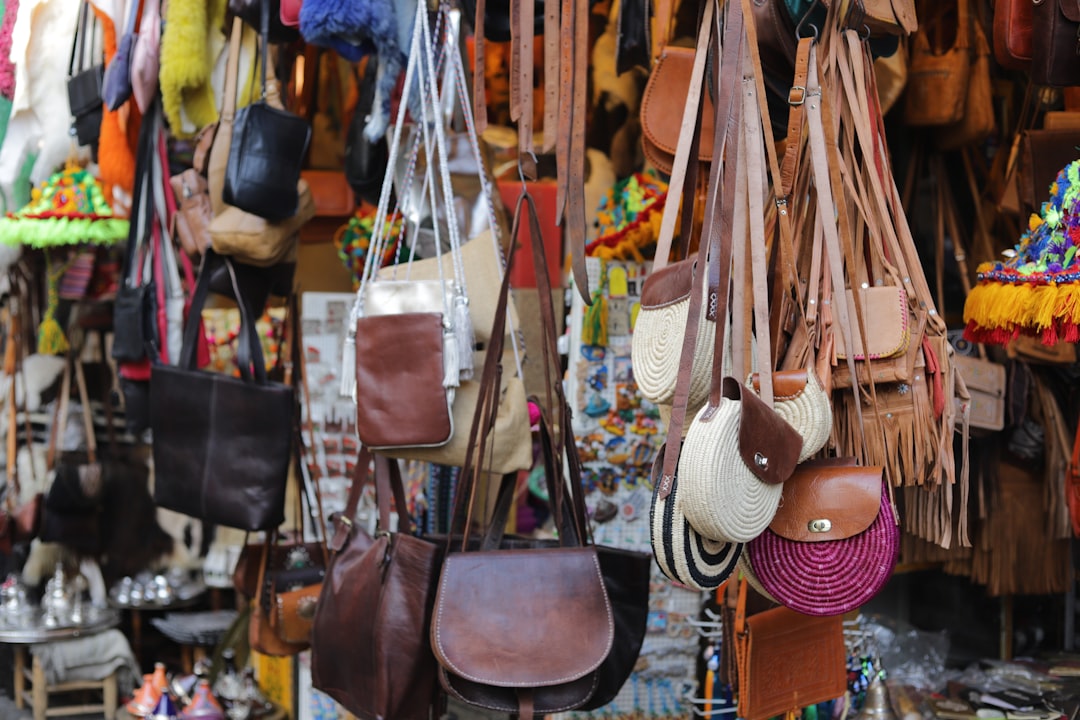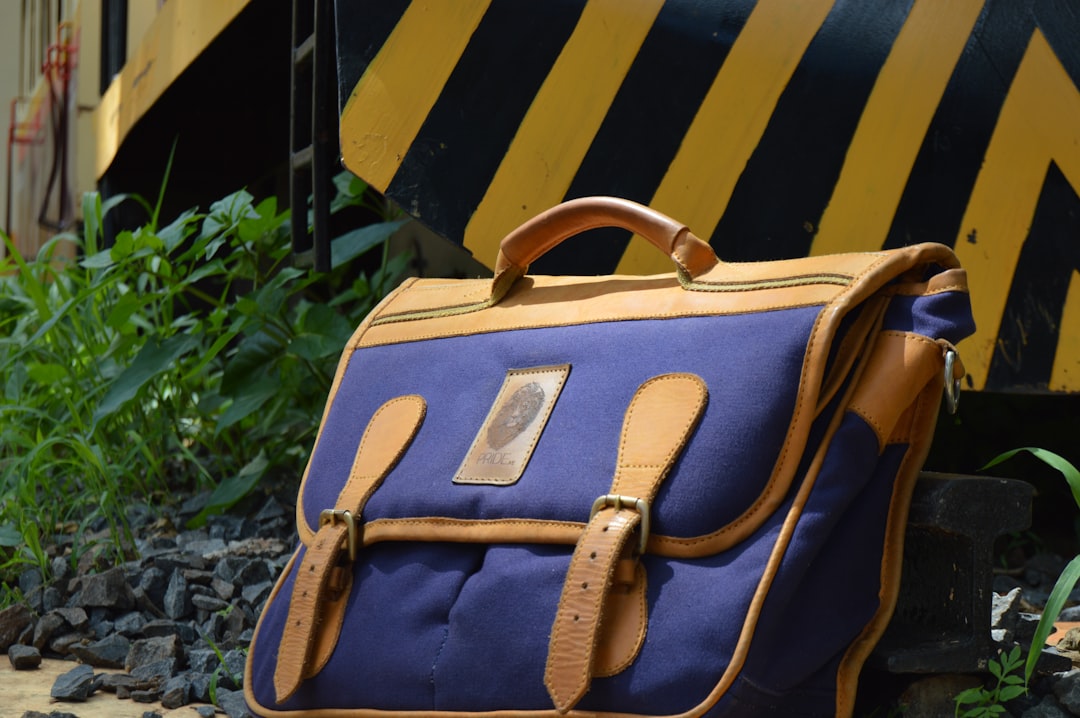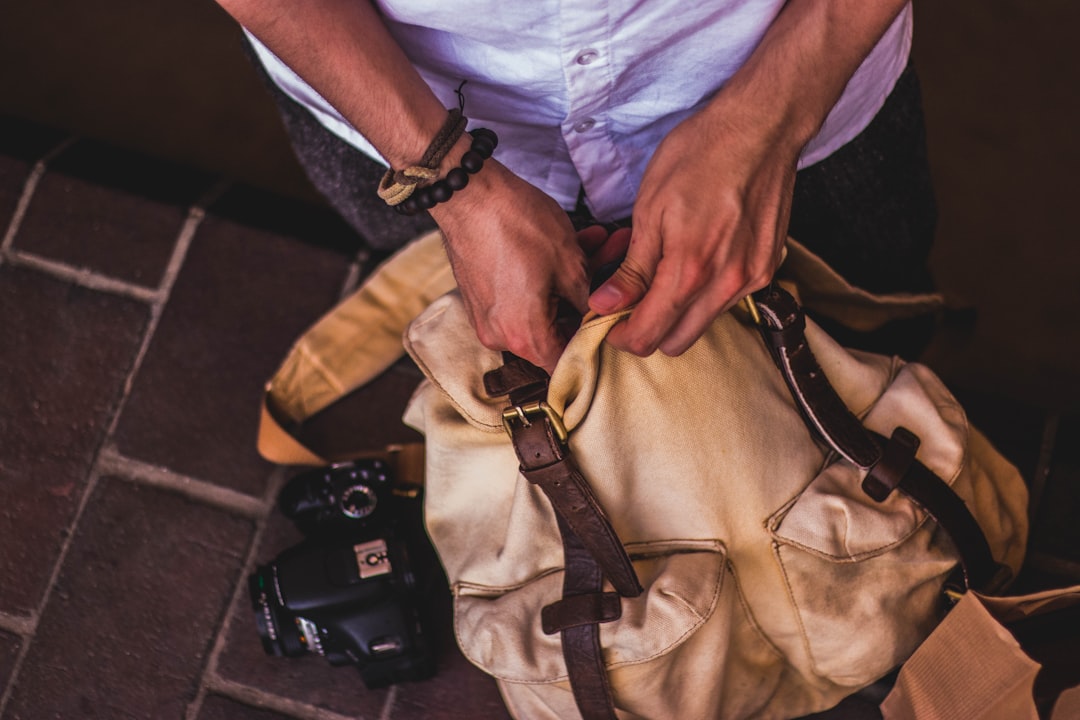

Engage prospects with a scan and streamline customer engagement with FREE QR code marketing tools by Sona – no strings attached!
Create a Free QR CodeFree consultation

No commitment

Engage prospects with a scan and streamline customer engagement with FREE QR code marketing tools by Sona – no strings attached!
Create a Free QR CodeFree consultation

No commitment
In today’s digitally driven world, QR codes have evolved from novelty to necessity, connecting physical experiences with digital action. For handbag repair services, QR technology transforms every touchpoint into a conversion opportunity: a scan can launch a booking flow, request an instant estimate, display personalized care tips, or enroll a satisfied client into a referral program. All of this happens without forcing customers to download another app or type out a long URL.
The outcome is practical and measurable. You shorten the distance between curiosity and commitment, capture intent signals that were previously invisible, and gain the data needed to retarget and attribute revenue. With a platform like Sona QR, you can centralize code creation, manage dynamic destinations, and sync scan activity into your CRM and ad platforms so offline interest becomes online action that fuels growth.

QR codes bridge the gap between physical touchpoints and digital experiences, supporting goals such as boosting appointment bookings, capturing reviews, and nurturing high-value customers after service. In a category where many prospects hesitate or become anonymous after a brief browse or flyer interaction, QR codes eliminate friction and create a clear next step.
Start by identifying where analog processes slow you down. Replace printed brochures, static appointment cards, and manual intake forms with dynamic QR experiences that are fast, mobile friendly, and trackable. Then align each QR placement with a specific objective, such as scan-to-book conversions, quote requests, or post-repair review submissions. The result is a streamlined journey that reduces drop-offs and delivers a better customer experience.
Instead of relying on generic flyers about restoration pricing, create a QR code that leads to a guided quote tool. The tool can collect bag brand, material, and issue type, then provide a range estimate plus an option to book a consultation. The customer gets instant clarity while your team records valuable data. This approach turns static collateral into an interactive conversion engine that is measurable and easy to optimize.

Handbag repair journeys are filled with offline-to-online moments that can either convert efficiently or disappear without a trace. QR codes solve the most persistent gaps by making digital actions effortless at the exact moment a customer shows interest, as outlined in this QR marketing guide.
When a customer is holding a dusty but beloved tote or considering restoration for a designer clutch, they crave fast answers with minimal friction. QR codes turn a look at your window display into a booked consultation, a pickup receipt into a review, and a care card into a loyalty enrollment. Unlike app downloads or long URLs, a scan takes seconds and feels natural in-store, at events, or at home.
Consider aftercare inserts placed inside returned handbags. A QR code can lead to a personalized care guide that changes based on brand and material. At the same time, the scan can enroll the customer in a VIP maintenance program, presenting a preventive cleaning offer at 90 days. This simple touch turns closing a repair ticket into the start of a longer relationship.

Handbag repair providers can deploy QR codes in several formats, each matched to a step in the customer journey. The goal is to meet the customer where they are and give them the fastest path to value.
For most handbag repair scenarios, web links, forms, SMS, and vCards are the highest impact. Dynamic QR codes are strongly recommended for campaigns and print assets because they let you update destinations and track performance without replacing the physical code.
With Sona QR, you can create all these code formats, manage dynamic targets, and attribute outcomes in one place. Over time, use performance data to refine which formats belong on which assets so every scan serves a clear purpose.
The most effective QR codes appear where customers are already listening. Identify the moments when motivation peaks, then give them the shortest path to a decision. In handbag repair, this often means intercepting curiosity in-store, prompting action at pickup, and nurturing loyalty during the first month after service.
Build a simple placement map that covers pre-visit, in-store, service completion, and post-service engagement. Assign a unique QR code to each placement so you can track and optimize. Over several weeks, you will see which assets pay for themselves and which need new creative or offers.
A consistent placement strategy compounds returns. As your audience learns that scanning your codes yields helpful information and exclusive value, their willingness to scan increases, driving more measurable engagement and revenue.

QR code use cases should map to real customer interactions. Each one should reduce friction, capture data, and provide a path to the next step. The following are the most proven in handbag repair:
These use cases address the top conversion risks. They transform short, analog moments into richer digital ones that customers appreciate and your team can measure. By aligning the destination and CTA to the context of the scan, you move people forward naturally and collect the data that fuels smarter marketing.
Every scan is a signal. It tells you what someone cares about, where they encountered your brand, and how ready they are to act. By deploying multiple codes across the journey and tagging each scan, you can build behavior-based audiences that power precise email, SMS, and ad campaigns, as outlined in Sona’s Playbook Driving High-Impact Campaigns with First-Party Intent Signals.
In handbag repair, meaningful audience distinctions often map to brand tier, material type, repair complexity, and lifecycle stage. Use these differences to personalize follow-ups and offers. People seeking strap repair on a luxury brand respond to different messages than those exploring color restoration for an everyday bag.
With Sona QR, every code acts as a smart sensor in your funnel. The platform logs scan metadata, applies tags, and syncs audiences into downstream tools. This allows you to retarget based on real behavior rather than guesses, which lifts relevance and conversion while lowering wasted spend.
QR codes become most powerful when they are woven across your channels. They turn brochures into interactive journeys, pop-up booths into lead capture engines, and post-purchase moments into loyalty drivers. The secret is consistency in design, CTA clarity, and destination quality.
Map each channel to a clear micro-conversion and measure the path forward from there. A direct mail scan might move someone to a quote form; a pickup receipt scan might push a review and referral flow; an event scan might enroll a prospect in VIP updates. Together these scans tell a story that you can act on and attribute back to revenue.
QR codes serve as the offline onramp to your digital engine. With Sona QR, you can manage codes for all channels in one place, monitor performance, and sync scan events to your CRM and ad platforms. This creates a connected, data-rich journey that is trackable from end to end.
Strong execution turns good ideas into revenue. Use the steps below to plan, launch, and optimize a QR campaign that converts, then refine based on data. Handbag repair providers can complete a full cycle in days, not weeks, and learn quickly from each iteration.
Clarify the business outcome before you design a single code. Pick a use case that matches a real friction point, such as converting window shoppers into booked consultations or capturing instant estimates from direct mail traffic.
A focused objective simplifies design, copy, and measurement. You can always add more use cases after the first one performs.
Choose the code format based on your goal. For campaigns that require tracking and future edits, dynamic codes are the default. For permanent, non-changing assets, static codes can be appropriate, but consider whether you will ever want to update the destination.
With Sona QR, you can switch destinations without reprinting, append UTM parameters, and tag scans by source automatically.
Design influences whether people scan. Create a code that is easy to notice, easy to understand, and easy to scan on first try. Then test on the actual surfaces and in the lighting conditions that matter.
Good design makes the code feel intentional and trustworthy. A strong CTA tells customers exactly what they get for the effort of scanning.
Roll out your codes where attention and intent are highest. For handbag repair services, prioritize in-store signage, claim tickets, invoices, dust bags, and event materials. Each placement should have a unique code so results can be compared.
Match physical context to the scan experience. A short form is appropriate next to the counter; a richer page suits at-home mail recipients who have more time.
Measurement is where QR shines. Track scans, conversions, and drop-offs by placement and audience, then tune your creative and destinations to lift results. Add new placements only after you have learned from the first set.
Close the loop with weekly reviews. Small changes such as a clearer CTA or a shorter form often drive meaningful gains in scan-to-conversion rates.

Attribution challenges have long plagued handbag repair providers. Flyers and signs may drive interest, but the trail goes cold once someone leaves the store. QR codes, paired with the right platform, illuminate the path from scan to sale and provide a defensible ROI story to guide budget and creative decisions. For deeper tactics, explore offline attribution.
Move beyond counting scans. Connect scans to outcomes such as quotes, bookings, and repeat purchases. Then align those outcomes with revenue by introducing identity where possible, such as email capture or CRM matchback. This lets you see which physical assets are profit drivers and which need a refresh.
With Sona QR and Sona.com, you see the full picture. Sona QR captures real-world engagement, Sona.com stitches those moments into journeys that lead to revenue. This clarity helps you protect your budgets, scale what works, and retire what does not.
QR code campaigns thrive on operational consistency and creative placement. You do not need dozens of codes to see results, but you do need each code to have a specific job, a strong CTA, and a measurable destination. Start with a few high-impact placements, then grow methodically.
Train your team to promote scanning naturally. A quick prompt at pickup or a simple reminder on the counter can double scan rates. Make sure customers know what they get for scanning, such as an instant estimate, a meaningful discount, or a time-saving status update.
Creative examples worth testing include QR codes on zipper tags that launch care guides, codes on claim tickets for real-time status checks, and codes on event wristbands to enter a restoration giveaway. Each idea turns a familiar object into an interactive touchpoint that can be tracked and improved—try applying them with stickers and labels.
QR codes are a strategic lever for handbag repair services, not a passing trend. They turn every surface into a digital entry point and every spark of curiosity into a measurable action. The result is a customer journey that feels effortless for clients and fully visible to your team.
Here is what QR codes deliver when executed well:
With Sona QR, you can generate dynamic codes in minutes, centralize management and tracking, and sync scan activity with your CRM and ad platforms. Sona.com adds identity resolution and multi-touch attribution so you can connect scans to revenue with confidence. Start creating QR codes for free.
QR codes have revolutionized handbag repair services by turning traditional customer interactions into dynamic, measurable opportunities for growth. Whether it’s attracting new clients, enhancing the repair experience with instant service details, or providing seamless access to promotions and loyalty programs, QR codes transform ordinary touchpoints into powerful conversion drivers. Imagine giving your customers instant access to repair status updates or exclusive offers simply by scanning a code—boosting satisfaction and repeat business effortlessly.
With Sona QR, you can create dynamic, trackable QR codes tailored to your handbag repair business in seconds. Update campaigns on the fly without reprinting, monitor which promotions drive the most appointments, and connect every scan to revenue insights for smarter decision-making. No more guesswork—just actionable data that propels your service ahead of the competition.
Start for free with Sona QR today and watch every scan turn into a loyal customer and every interaction into increased revenue.
Reputable handbag repair services use QR codes on signage, packaging, and receipts to provide instant booking, quotes, and care tips, allowing you to easily access trusted services and verify their legitimacy through interactive digital touchpoints.
Common services accessible via QR codes include appointment booking, instant quote requests, repair tracking and updates, review collection, referral activation, care education, and loyalty program enrollment.
Costs vary based on brand, material, and repair type, but QR code–linked guided quote tools provide instant price ranges by collecting these details, giving you a clear estimate without delay.
Signs include damaged handles, worn leather, broken hardware, discoloration, or structural issues; QR codes on repair receipts or care guides can help you identify needed services and schedule consultations.
Prolong handbag life by following personalized care guides accessed via QR codes on dust bags or hardware tags, scheduling preventive cleanings, and enrolling in VIP maintenance programs offered by repair services.
QR codes provide fast, app-free access to booking, quotes, care tips, and reviews; enable dynamic content updates; track customer engagement; and help convert offline interest into measurable online actions.
QR codes are placed on storefront windows, in-store signage, repair receipts, packaging inserts, dust bags, event displays, direct mail, and claim tickets to capture customer intent at key moments.
They reduce friction by providing instant access to service menus, booking, quotes, and care education, turning browsing or post-service moments into actionable steps that enhance satisfaction and loyalty.
Static codes are used for unchanging content like care guides, while dynamic QR codes enable editable links, tracking, and seasonal offer rotation, making them ideal for campaigns and print assets.
They monitor scan volume, device type, location, and conversions through platforms like Sona QR, sync data to CRMs, A/B test landing pages, and adjust placements to improve scan-to-conversion rates.
Yes, QR codes on claim tickets or SMS receipts can link you to repair tracking pages where you can check status, approve additional work, or adjust pickup plans instantly.
They enable automated follow-ups with care tips, review requests, referral incentives, and enrollment in loyalty programs, turning one-time repairs into ongoing relationships.
Look for QR codes that have clear branding, a concise call to action explaining the benefit, easy scannability on various surfaces, and an accessible fallback URL.
QR codes track the customer journey from scan to booking or purchase, syncing data to CRMs and attribution platforms to show which physical assets drive revenue and optimize marketing spend.
Examples include QR codes on zipper tags linking to care guides, codes on claim tickets for repair updates, event wristbands for giveaways, and dust bag inserts offering maintenance discounts.
They connect offline assets like brochures, packaging, and events with digital experiences such as booking forms and loyalty programs, creating consistent and trackable customer journeys across channels.
They should define clear goals, select appropriate QR code types, design and test codes for usability, deploy codes strategically across high-impact channels, and track and optimize performance regularly.
Use Sona QR's trackable codes to improve customer acquisition and engagement today.
Create Your FREE Trackable QR Code in SecondsJoin results-focused teams combining Sona Platform automation with advanced Google Ads strategies to scale lead generation

Connect your existing CRM

Free Account Enrichment

No setup fees
No commitment required

Free consultation

Get a custom Google Ads roadmap for your business






Launch campaigns that generate qualified leads in 30 days or less.
